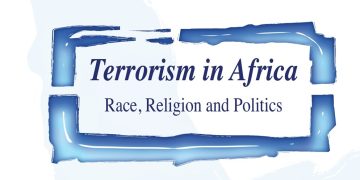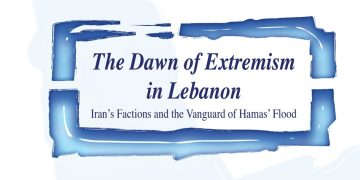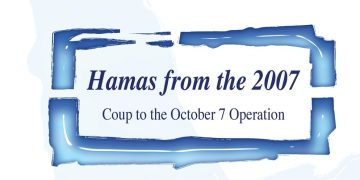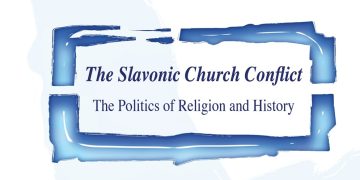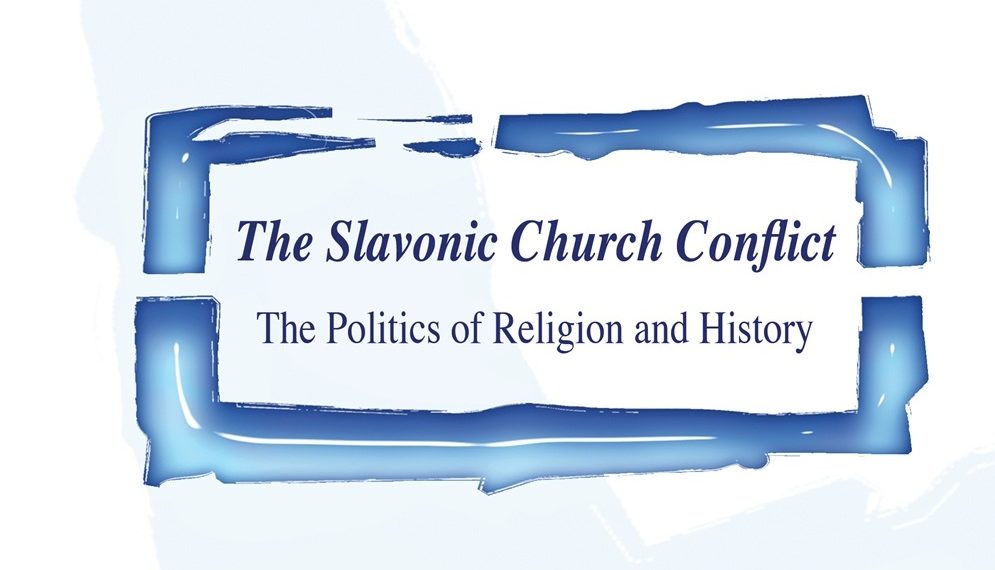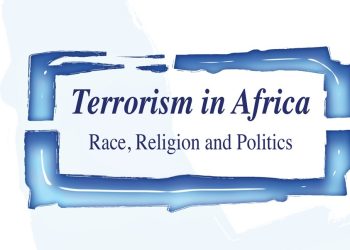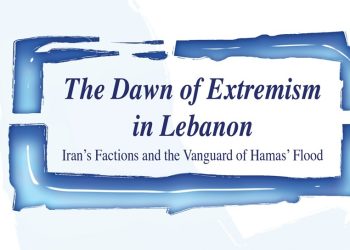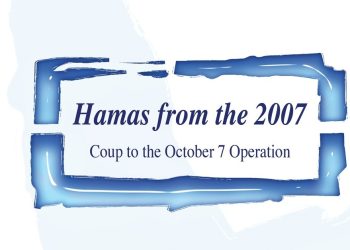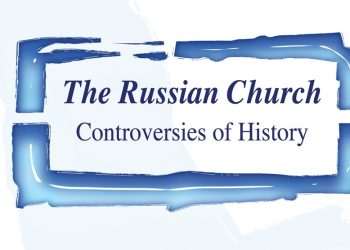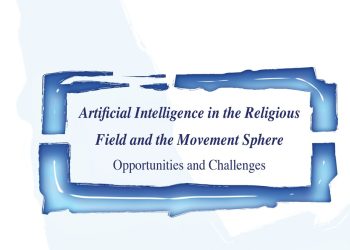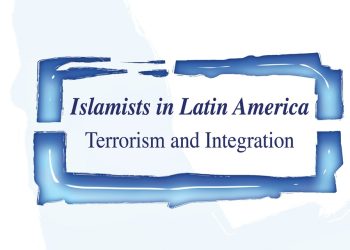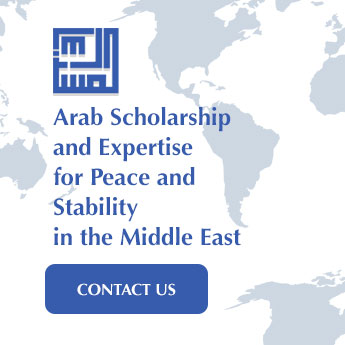February 2024
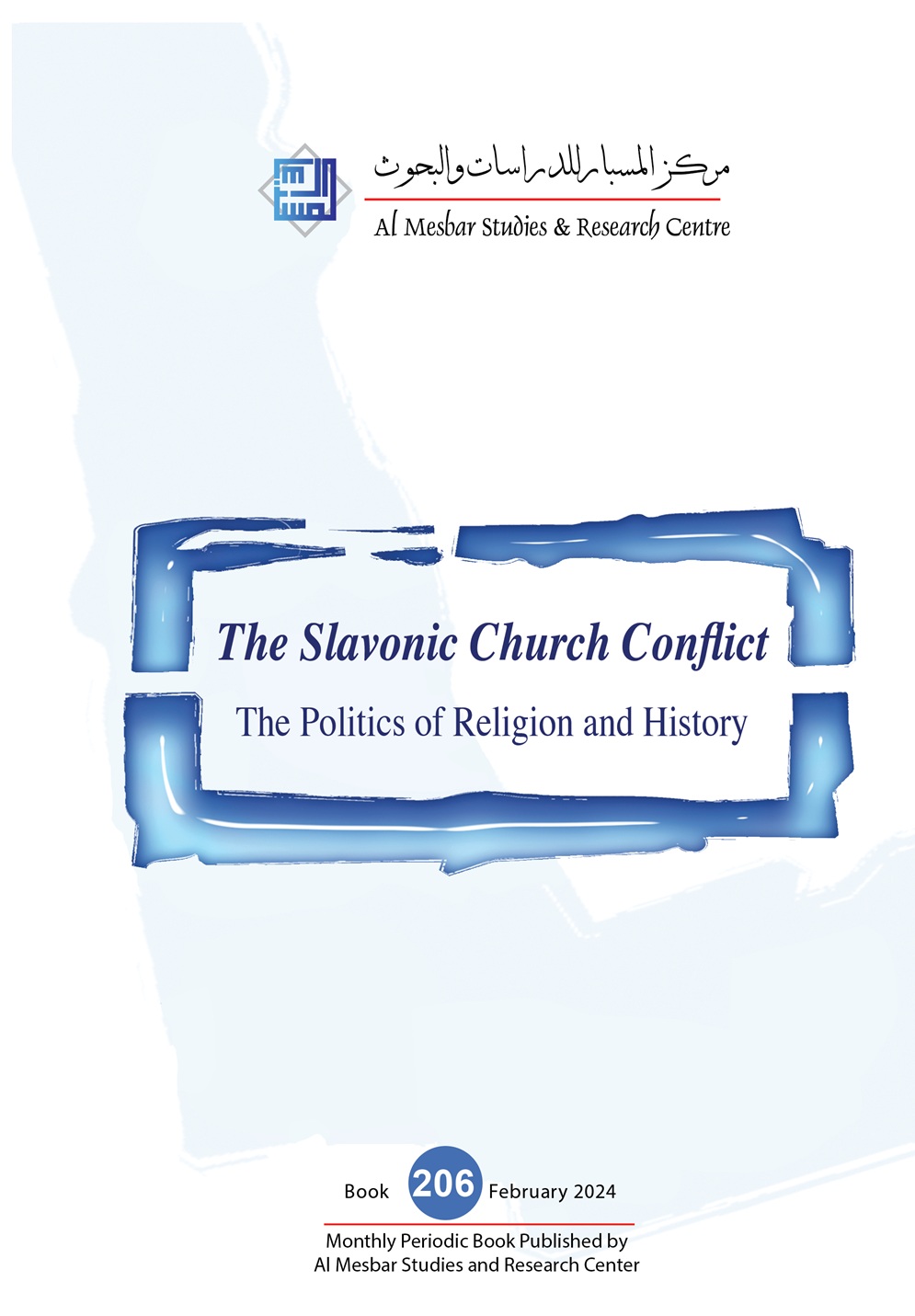 In its 206th book, “The Slavonic Church Conflict: The Politics of Religion and History,” published February 2024, the Al Mesbar Center for Studies and Research examines the political use of church conflicts and historical narratives in both Russia and Ukraine. The focus is on the historical dialectics, the cause of disputes, and their impact on contemporary politics. The book also explores their influence on identity, modernity, liberalism, conservatism, universal values, state, and religion.
In its 206th book, “The Slavonic Church Conflict: The Politics of Religion and History,” published February 2024, the Al Mesbar Center for Studies and Research examines the political use of church conflicts and historical narratives in both Russia and Ukraine. The focus is on the historical dialectics, the cause of disputes, and their impact on contemporary politics. The book also explores their influence on identity, modernity, liberalism, conservatism, universal values, state, and religion.
The first study explores the complex historical relationship between Russia and Ukraine, which influenced church relations as well as questions of historical origins and political authority. Ahmed Lutfi Dahshan classifies the modern Slavic peoples into three groups: Eastern Slavs (Russians, Ukrainians, Belarusians, and Russianized peoples, mostly Eastern Orthodox), Western Slavs (Poles, Czechs, Slovaks, Kashubians, mostly Catholic), and Southern Slavs (Serbs, Bosnian Croats, Macedonians, Slovenians, Montenegrins, Bulgarians, mostly Orthodox with the exception of the Croats and Slovenes).
These groups share heritage, dress, and customs, yet have been riven by chronic political disputes within and between them. The only Slavic empire formed is that of the Eastern Slavs in 862 AD with Kievan Rus, which expanded alongside neighboring entities like the Jewish Khazar Kingdom, Muslim Bulgarians, and Byzantine followers of the Eastern Greek Church, until the Mongol invasion in 1240. This invasion intensified divisions among Slavic groups outside Mongol control, especially in western and central Ukraine, with shifts between Catholicism and Orthodoxy increasing. This period witnessed the formation of several alliances aimed at repelling Tatar encroachment.
The Russian Empire’s rulers grew stronger as the capital moved to Moscow in 1277, with Moscow’s rulers consciously seeking to become the “Third Rome” following Constantinople’s fall in 1453. Ivan III ceased paying tribute to the Tatar Khanate and strengthened his rule through marriage to Byzantine imperial descendants, enabling Ivan IV to don the Monomakh’s Cap, symbolizing his claim as heir to both the Byzantine emperors and the ancient Russian kingdom.
The Polish-Lithuanian Commonwealth, established by the 1569 Union of Lublin, opposed Russia. Its nobility converted in time to Catholicism. Moscow countered by securing legitimacy from Patriarch Jeremiah II of Constantinople, who elevated the Metropolitan of Moscow to Patriarchate status in 1589. The Catholic Church responded with the 1596 Brest Union, allowing the use of Slavic language in churches while preserving Greek rituals to spread Orthodoxy.
Moscow opposed the Union and supported revolts against the Polish-Lithuanian state, seeking to annex its component parts to Tsarist Russia. In 1654, Moscow regained Kiev and eastern territories right of the Dnieper River. Through relations with the Ottomans, Moscow secured a 1686 decree shifting the Kiev Archbishopric’s jurisdiction from Constantinople to Moscow. However, in 2018, the Patriarch of Constantinople granted autonomy to the Orthodox Church in Ukraine, rejecting the 1686 decree and labeling the Russian Church’s claims as “ethnic heresy.” In 2020, Turkish President Erdogan formally converted the Hagia Sophia Cathedral into a mosque. Notably, Russian President Putin lodged no objection to this move, sensing a gain for Moscow in the diminishment of Constantinople’s Patriarchate status.
Georgian scholar Mikheil Korkashvili states that the Orthodox Church justified Russian imperial expansion for two centuries, especially in the southern Caucasus and Black Sea, opposing Ottoman rivals. He notes religion’s diminished role during the Soviet Union, as well as Orthodoxy’s subsequent revival, fueled in part by power struggles between pro-Western liberals and pro-Soviet statist ideologies.
Korkashvili claims the Kremlin seeks to consolidate the Russian Church globally, citing Russia’s purchase of the former French Meteorological Institute near the Eiffel Tower, granting 8,400 square meters to the Orthodox Church. These expansions are managed by some of the most influential Russian agencies.
The Church holds significant sway within Russia, including the nuclear weapons complex, as noted by Dmitry Adamsky. It contributes to the “Russian World” doctrine launched by Putin in 2007 to spread Russian culture and language, with Church support from 2009.
The Russian Duma responds to Church positions on issues like homosexuality and religious feelings. The Church uses its endowments abroad to support state soft power and attract loyal churches. The strategic ambition includes relocating the Ecumenical Patriarchate from Istanbul to Moscow, which would make the Patriarch of Moscow the Ecumenical Patriarch of Orthodoxy.
The Russian Church successfully extended its influence in Moldova, supporting Russian-aligned propaganda opposed to European integration and ostensibly devoted to preserving local culture. Church leaders openly supported political figures like Igor Dodon and opposed Maya Sandwa in the 2016 elections, leaning heavily on religiously-inflected historical narratives.
Russian researcher Valery Korovin divides the Christian Church’s history into three periods: “Persecution,” “Imperial Prosperity,” and “Apostasy.” He discusses the Russian Church’s status during these periods, referencing the concept of the “katechon” — a force or barrier preventing the rise of the Antichrist — which is often held to be embodied in the harmony between ruler and patriarch. Korovin examines the 17th-century Russian Church schism, differing views on apostasy, and the Church’s role during the Soviet era. He sees the Church’s revival under Putin as a continuation of the imperial period and presence of katechon.
Orthodoxy represents the ideology of the Russian majority against Western liberal values post-communism. Korovin discusses its political influence and calls for returning to traditional integration of church and state. He highlights the Kremlin’s role in addressing schisms from imperial reforms, Soviet-era weakening of the Church, and the Orthodox faith’s influence on the Russian public today.
Russian researcher Leontieva Gennadievna confirms that Soviet policy was strict in its anti-religious stance but softened during Stalin’s era to mobilize society against Nazism in World War II. She describes Soviet relations with religion as unstable and lacking a unified vision.
Her study divides Soviet religious policy into three stages, each with distinct characteristics and motives linked to political and socio-economic transformations: the Civil War power struggle, the emergence and confrontation during World War II, and Cold War stability amid geopolitical conflict with the West.
The religious division among Eastern Slavs, stemming in part from the Mongol invasion’s dismantling of their united state, culture, language, religion, and church, is a major feature of this landscape. Ukrainian researcher Denys Targonskyi analyzes these divisions, describing the conflict between Russia and Ukraine evolving from a cultural cold war post-1991 Soviet dissolution to a hot war since 2014. Ukraine divides into two blocs: one supporting integration with Russia and shared Eastern Slavic heritage; the other supporting European origins and integration, supported by independent Orthodox and Catholic churches linked to Europe.
This conflict raises questions about Ukraine’s identity and history, debating whether integration with Europe enervates or invigorates its cultural roots. The Ukrainian narrative views Russian history as linked to Ukraine, not vice versa, and asserts the independence of the Ukrainian Church from the Russian Church as legitimate.
Russian researcher Nataliya Melentyeva studies the Russian Church’s return to public life and its influence on political ideas and the anti-modernist tradition. This movement sees Russia as uniquely distinct from Western materialism, framing a traditionalist posture as a defense against decline rather than simple reaction. Religious theology plays a central role in this doctrine, which criticizes “new modernity” for abolishing human subjectivity.
Melentyeva discusses civilizations amid globalization and multiculturalism, focusing on Russia’s civilizational divergences from the West. This intellectual debate, present in pre-revolutionary Russia and diminished under the Soviet Union, resurges amid current tensions between Russia and the West, especially after the 2022 Russian-Ukrainian war. These ideas connect to societal transformations and the role of church and religion.
The Cold War opposition between communism and capitalism led Western countries to develop expertise in Russian affairs. Interest declined after the Soviet Union’s collapse in 1991. William Burns’ book “The Back Channel: Memoirs of American Diplomacy and the Case for its Renewal” presents the perspective of an American diplomat experienced in Russia, who foresaw the Western-Russian conflict during the Ukrainian-Russian war. Burns critiques American policy for contributing to strained relations and analyzes cultural, religious, and identity dimensions through direct dialogue with Russian decision-makers and society.
In conclusion, the Al-Mesbar Center for Studies and Research thanks all researchers and contributors to this book, including coordinator Ahmed Dahshan, hoping it fills a gap in the Arab library.


